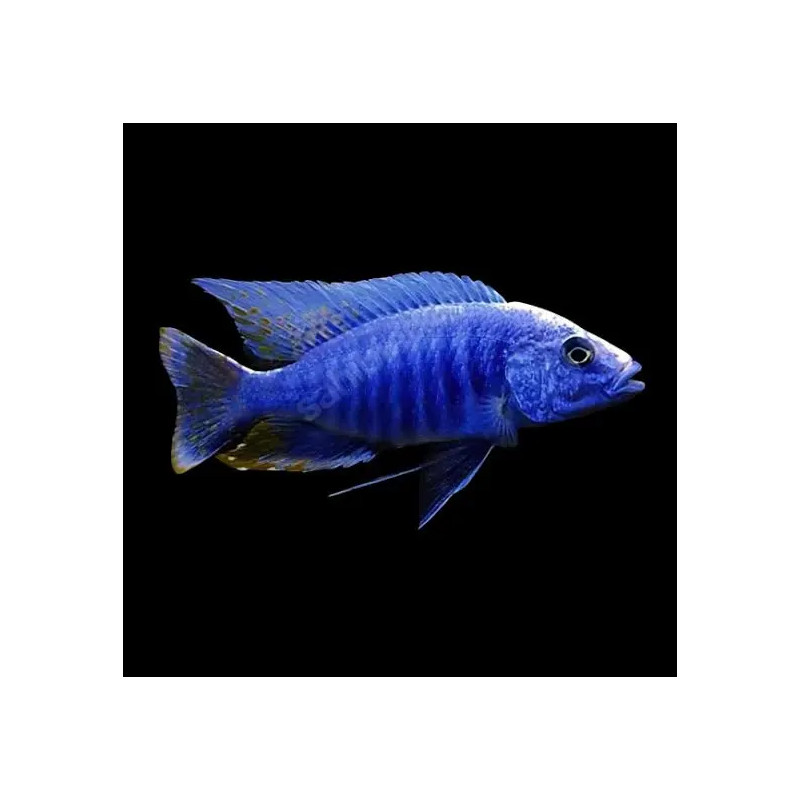More info
Common Name: Blue Orchid Peacock Cichlid, Blue Peacock, Nyassae Peacock
Scientific Name: Aulonocara nyassae
Order: Cichliformes — Family: Cichlidae (Cichlids)
Distribution: Lake Malawi (East Africa), endemic. Found in sandy and rocky transition zones of the lake.
Lifespan: 8 to 10 years
Maximum Size (Adult): 12 to 15 cm
pH: 7.5 to 8.6 — Hardness: 10 to 20 dGH
Temperature: 24°C to 28°C
Minimum Tank Size: 200 liters
Compatibility: Semi-peaceful — Can be kept in Malawi community tanks, but males are territorial, especially during breeding.
Behavior & Compatibility:
Males display intense electric blue and violet coloration, used to attract females and deter rivals. They are more peaceful compared to other Malawi mbuna species, but still defend their territories. Avoid mixing multiple Aulonocara species with similar appearance to prevent hybridization.
Diet:
Omnivorous with a preference for animal matter. In the wild, they feed on small benthic invertebrates detected by vibrations in the sandy substrate. In aquariums, they accept high-quality cichlid foods, including pellets, flakes, brine shrimp, mysis, and mosquito larvae. A varied diet is important to maintain their health and vibrant colors.
Reproduction:
Oviparous and maternal mouthbrooder. The male establishes a territory and attracts females with his bright coloration. After spawning, the female collects the eggs in her mouth, where fertilization occurs through the “egg-spot fertilization” behavior. Incubation lasts 21–28 days, after which fry are released free-swimming.
Sexual Dimorphism:
Males are far more colorful, with intense blue metallic shades. Females and juveniles are duller, usually brown or grayish. Males may also grow slightly larger.
Natural Habitat & Biotope:
Endemic to Lake Malawi, living in transition zones between sandy bottoms and rocky areas. Prefers clear, alkaline, well-oxygenated waters.
Etymology:
The genus name Aulonocara derives from the Greek aulos (flute or tube) and kara (head), referring to the characteristic cranial sensory canals. The species epithet nyassae refers to Lake Nyassa, the old name of Lake Malawi.

